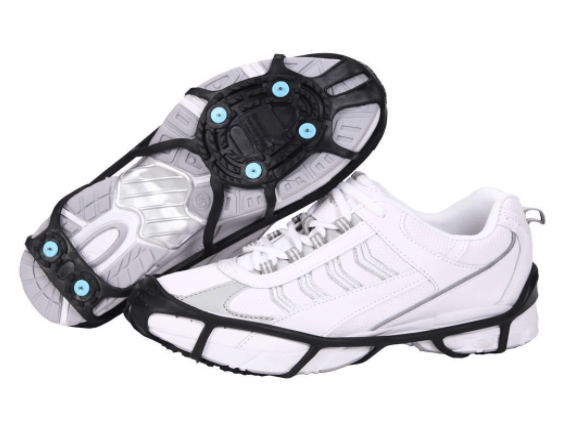5 Ways Make Shoes Non Slip

The importance of non-slip shoes cannot be overstated, particularly in environments where slippery floors are a common hazard, such as in kitchens, hospitals, or outdoors on icy surfaces. Slip-resistant footwear is crucial for preventing falls and ensuring safety. If you’re looking to enhance the traction of your existing shoes or are interested in modifying them to make them non-slip, there are several effective methods and products available. Here are five ways to make your shoes non-slip, catering to different needs and preferences.
1. Apply Non-Slip Coatings or Sprays
One of the simplest and most immediate ways to improve the grip of your shoes is by using non-slip coatings or sprays. These products are designed to provide an extra layer of traction and can be applied directly to the soles of your shoes. They are particularly useful for shoes that are otherwise slippery, such as dress shoes or certain types of boots. When selecting a non-slip spray or coating, ensure that it is suitable for the material of your shoe sole. Some products may not be compatible with all types of materials, such as rubber, leather, or synthetic compounds.
2. Use Non-Slip Shoe Stickers or Treads
Non-slip shoe stickers or treads are another effective solution for enhancing shoe traction. These are small, adhesive strips that can be applied to the bottom of your shoes. They come in various patterns and are made from materials that provide excellent grip on smooth surfaces. The stickers are easy to apply and can be cut to fit different areas of the shoe sole for optimal grip. They are a great option for individuals who need temporary or adjustable non-slip solutions.
3. Modify with Non-Slip Shoe Clips or Overshoes
For situations where a more temporary solution is required, or for protecting shoes that cannot be altered, non-slip shoe clips or overshoes are a viable option. These are devices that can be attached over your existing shoes to provide an extra layer of grip. They are popular among workers in slippery environments and can be easily put on or taken off as needed. Non-slip shoe clips and overshoes are available in various designs and sizes to fit different types of shoes and are made from durable materials to withstand regular use.
4. Add Non-Slip Sole Inserts
Another method to consider is adding non-slip sole inserts. These are removable insoles designed with textured surfaces or specific grip-enhancing materials that can be placed inside your shoes. While they do not directly alter the shoe’s outer sole, they can significantly improve the foot’s stability inside the shoe, reducing the likelihood of slipping. Non-slip sole inserts are especially beneficial in shoes that are prone to internal slipping, such as those with smooth insoles or in cases where foot sweating is a concern.
5. Replace with Non-Slip Shoe Soles or Insoles
For a more permanent solution, consider replacing your shoe soles or insoles with non-slip versions. This method involves either purchasing shoes with non-slip soles from the outset or replacing the soles of your existing shoes with slip-resistant alternatives. Non-slip insoles can also be purchased separately and inserted into your shoes. This approach is particularly recommended for individuals who frequently encounter slippery conditions and need a reliable, long-term solution. Replacing soles or insoles can provide the most durable and consistent non-slip performance.
Conclusion
Enhancing the non-slip capabilities of your shoes is a straightforward and effective way to boost safety and confidence in various environments. Whether you opt for a quick fix like non-slip sprays, a more adaptable solution such as shoe stickers, or a permanent modification like replacing soles, there’s a method suited to your needs and preferences. Always consider the material of your shoe, the intended use, and the durability of the non-slip method you choose to ensure the best possible outcome.
FAQ Section
What are the most effective non-slip materials for shoes?
+The most effective non-slip materials include rubber compounds with textured patterns, specialized polymers, and certain types of ceramic coatings. The choice of material often depends on the shoe type, intended use, and the surface on which the shoes will be used.
Can non-slip shoe products be used on all types of shoes?
+No, not all non-slip shoe products are compatible with every type of shoe. For example, certain non-slip sprays may not adhere well to leather or could damage synthetic materials. Always check the compatibility of the non-slip product with your shoe material before application.
How long do non-slip shoe modifications typically last?
+The longevity of non-slip shoe modifications can vary significantly depending on the method used, the quality of the materials, and how frequently the shoes are worn. On average, non-slip sprays and stickers may need to be reapplied every few months, while more permanent modifications like sole replacements can last for years with proper care.
By understanding and applying these methods, individuals can significantly reduce their risk of slipping and falling, ensuring a safer and more confident stride in various environments. Whether through quick fixes, adaptable solutions, or permanent modifications, making your shoes non-slip is a practical step towards enhancing personal safety and well-being.


